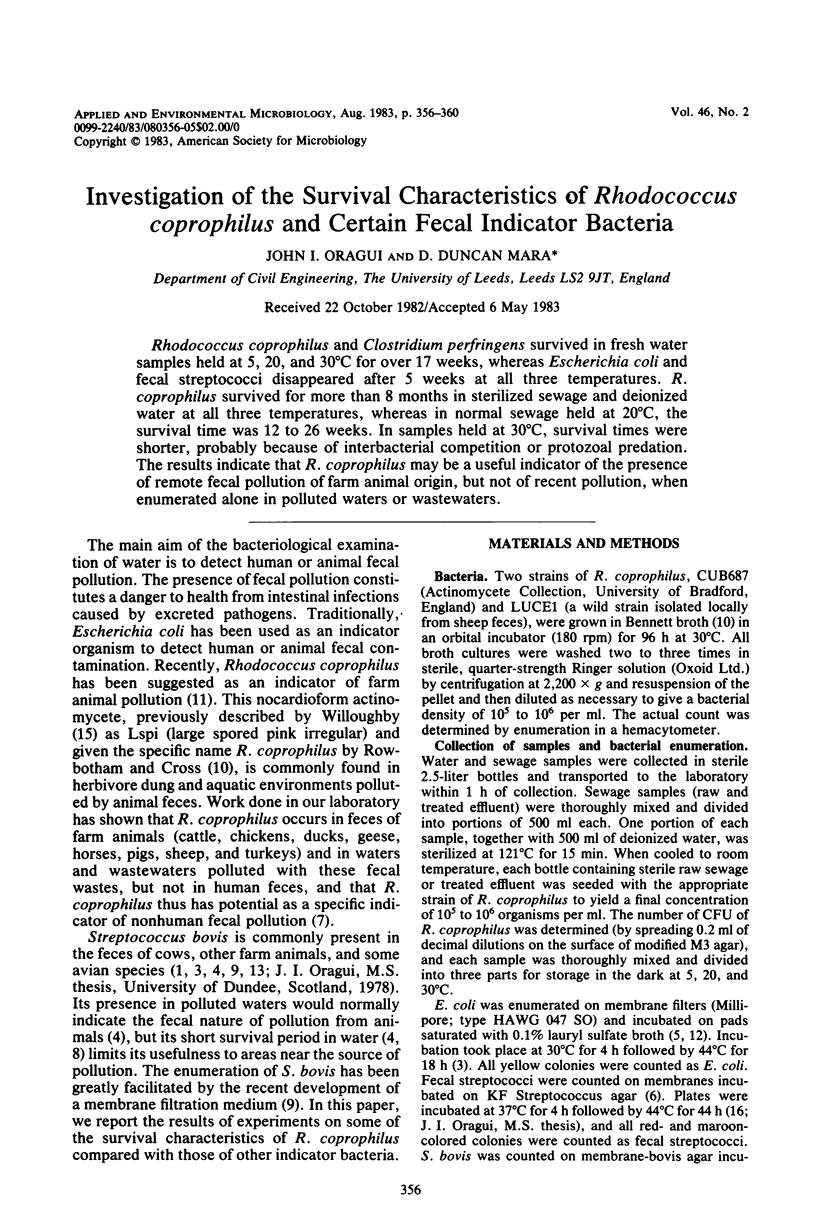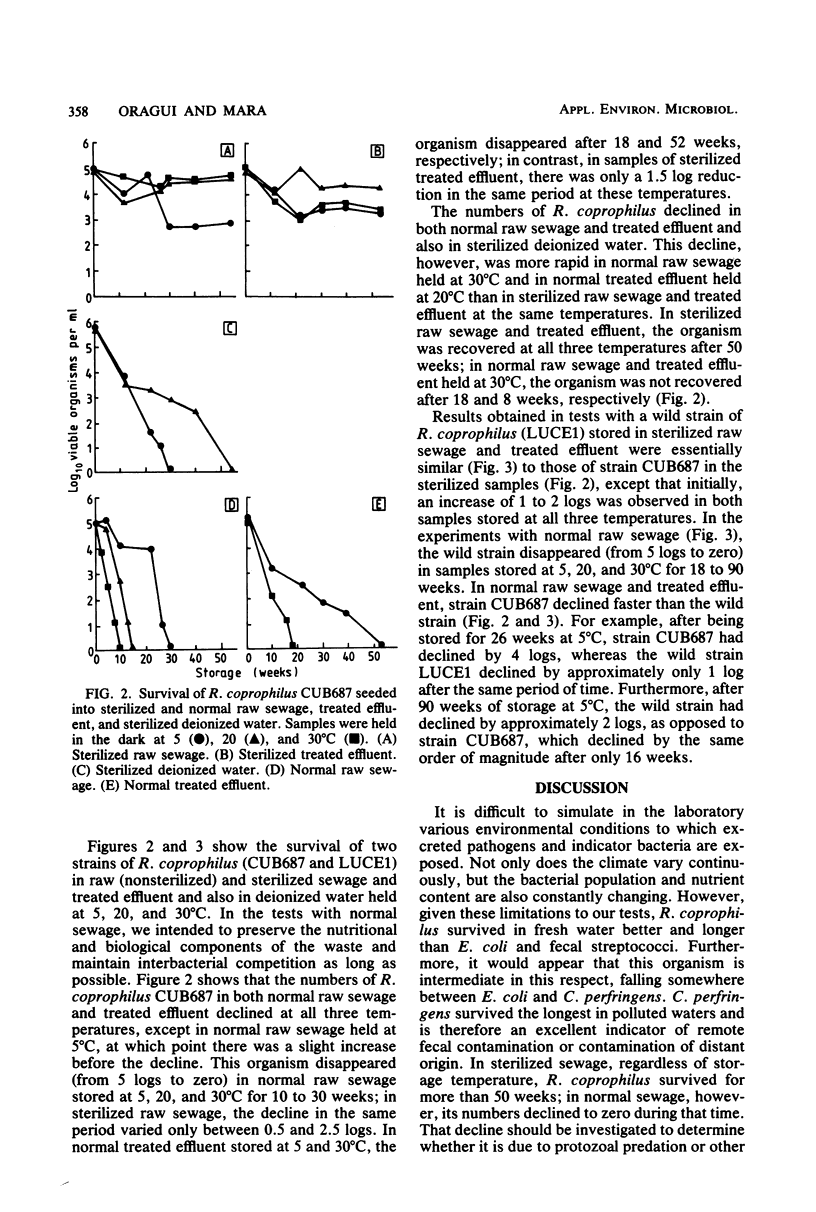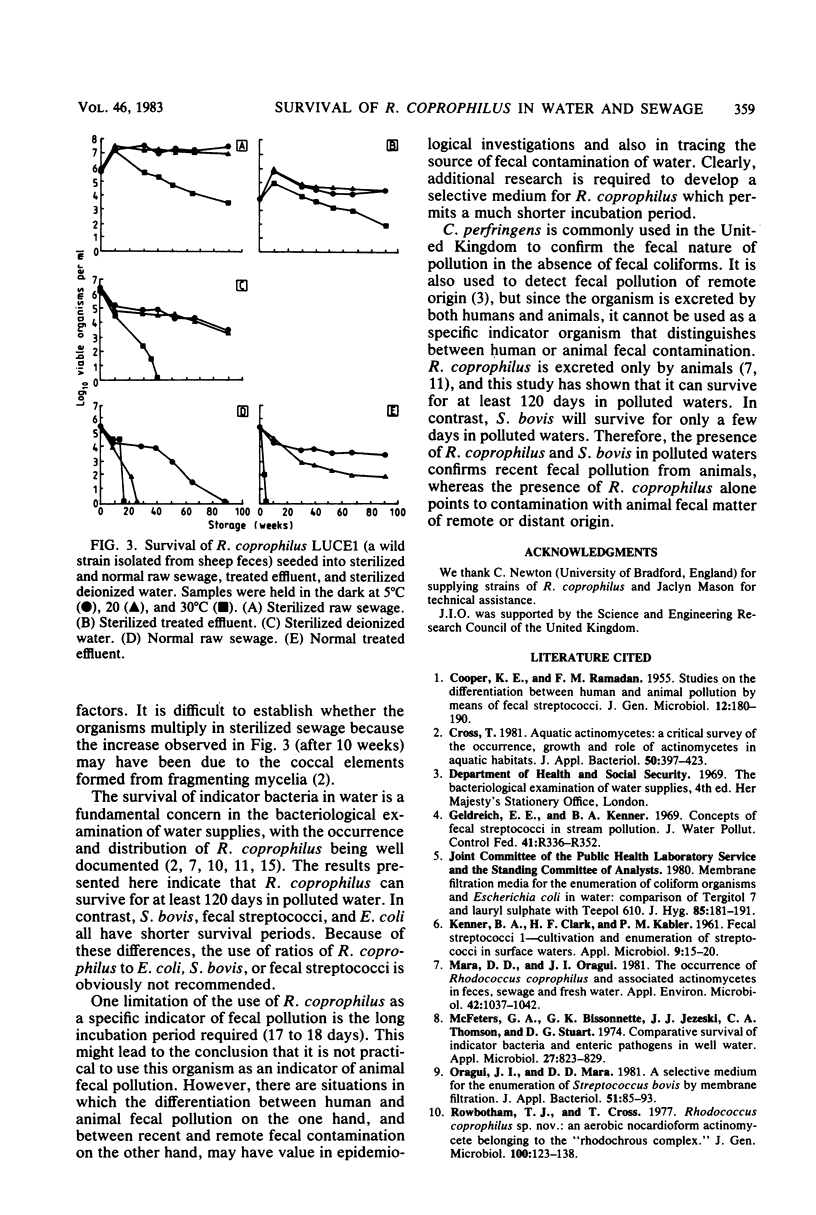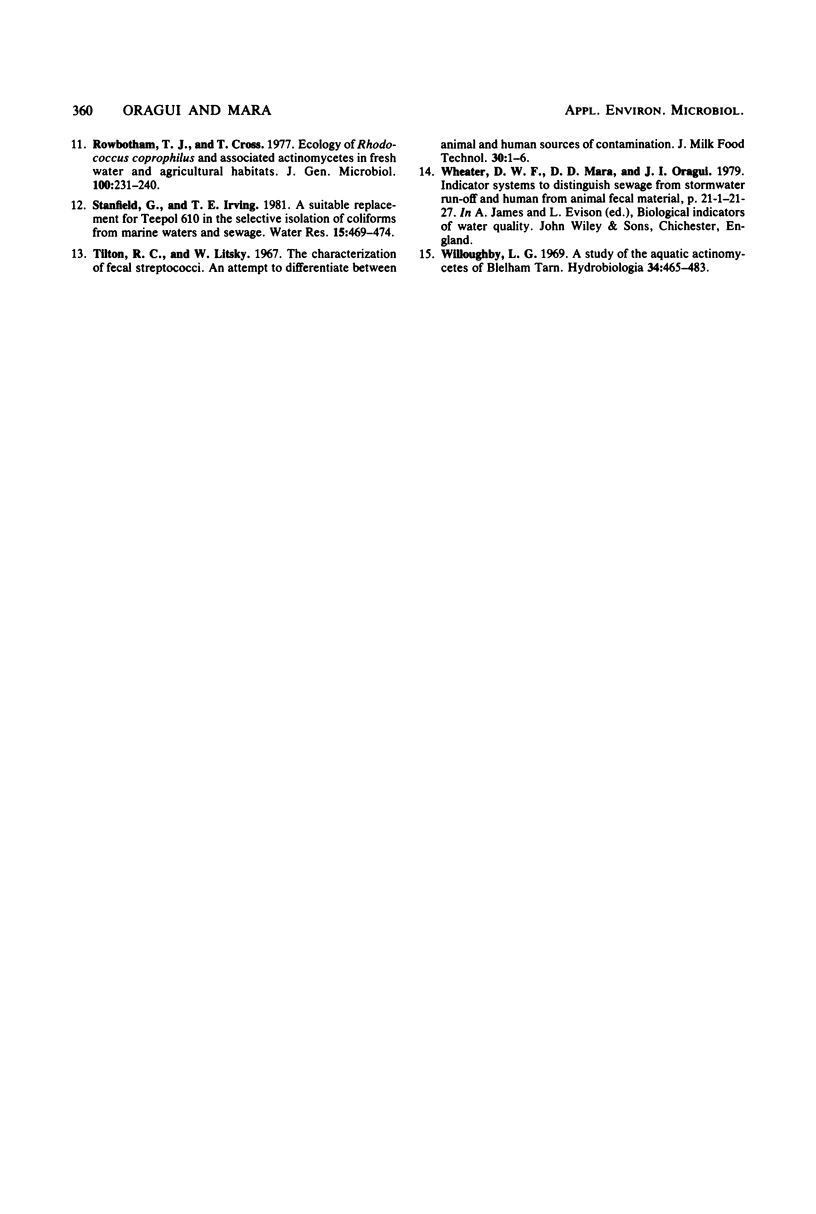Abstract
Rhodococcus coprophilus and Clostridium perfringens survived in fresh water samples held at 5, 20, and 30 degrees C for over 17 weeks, whereas Escherichia coli and fecal streptococci disappeared after 5 weeks at all three temperatures. R. coprophilus survived for more than 8 months in sterilized sewage and deionized water at all three temperatures, whereas in normal sewage held at 20 degrees C, the survival time was 12 to 26 weeks. In samples held at 30 degrees C, survival times were shorter, probably because of interbacterial competition or protozoal predation. The results indicate that R. coprophilus may be a useful indicator of the presence of remote fecal pollution of farm animal origin, but not of recent pollution, when enumerated alone in polluted waters or wastewaters.
Full text
PDF




Selected References
These references are in PubMed. This may not be the complete list of references from this article.
- COOPER K. E., RAMADAN F. M. Studies in the differentiation between human and animal pollution by means of faecal streptococci. J Gen Microbiol. 1955 Apr;12(2):180–190. doi: 10.1099/00221287-12-2-180. [DOI] [PubMed] [Google Scholar]
- Cross T. Aquatic actinomycetes: a critical survey of the occurrence, growth and role of actinomycetes in aquatic habitats. J Appl Bacteriol. 1981 Jun;50(3):397–423. doi: 10.1111/j.1365-2672.1981.tb04245.x. [DOI] [PubMed] [Google Scholar]
- Geldreich E. E., Kenner B. A. Concepts of fecal streptococci in stream pollution. J Water Pollut Control Fed. 1969 Aug;41(8 Suppl):R336+–R336+. [PubMed] [Google Scholar]
- KENNER B. A., CLARK H. F., KABLER P. W. Fecal Streptococci. I. Cultivation and enumeration of Streptococci in surface waters. Appl Microbiol. 1961 Jan;9:15–20. doi: 10.1128/am.9.1.15-20.1961. [DOI] [PMC free article] [PubMed] [Google Scholar]
- Mara D. D., Oragui J. I. Occurrence of Rhodococcus coprophilus and associated actinomycetes in feces, sewage, and freshwater. Appl Environ Microbiol. 1981 Dec;42(6):1037–1042. doi: 10.1128/aem.42.6.1037-1042.1981. [DOI] [PMC free article] [PubMed] [Google Scholar]
- McFeters G. A., Bissonnette G. K., Jezeski J. J., Thomson C. A., Stuart D. G. Comparative survival of indicator bacteria and enteric pathogens in well water. Appl Microbiol. 1974 May;27(5):823–829. doi: 10.1128/am.27.5.823-829.1974. [DOI] [PMC free article] [PubMed] [Google Scholar]
- Oragui J. I., Mara D. D. A selective medium for the enumeration of Streptococcus bovis by membrane filtration. J Appl Bacteriol. 1981 Aug;51(1):85–93. doi: 10.1111/j.1365-2672.1981.tb00911.x. [DOI] [PubMed] [Google Scholar]


